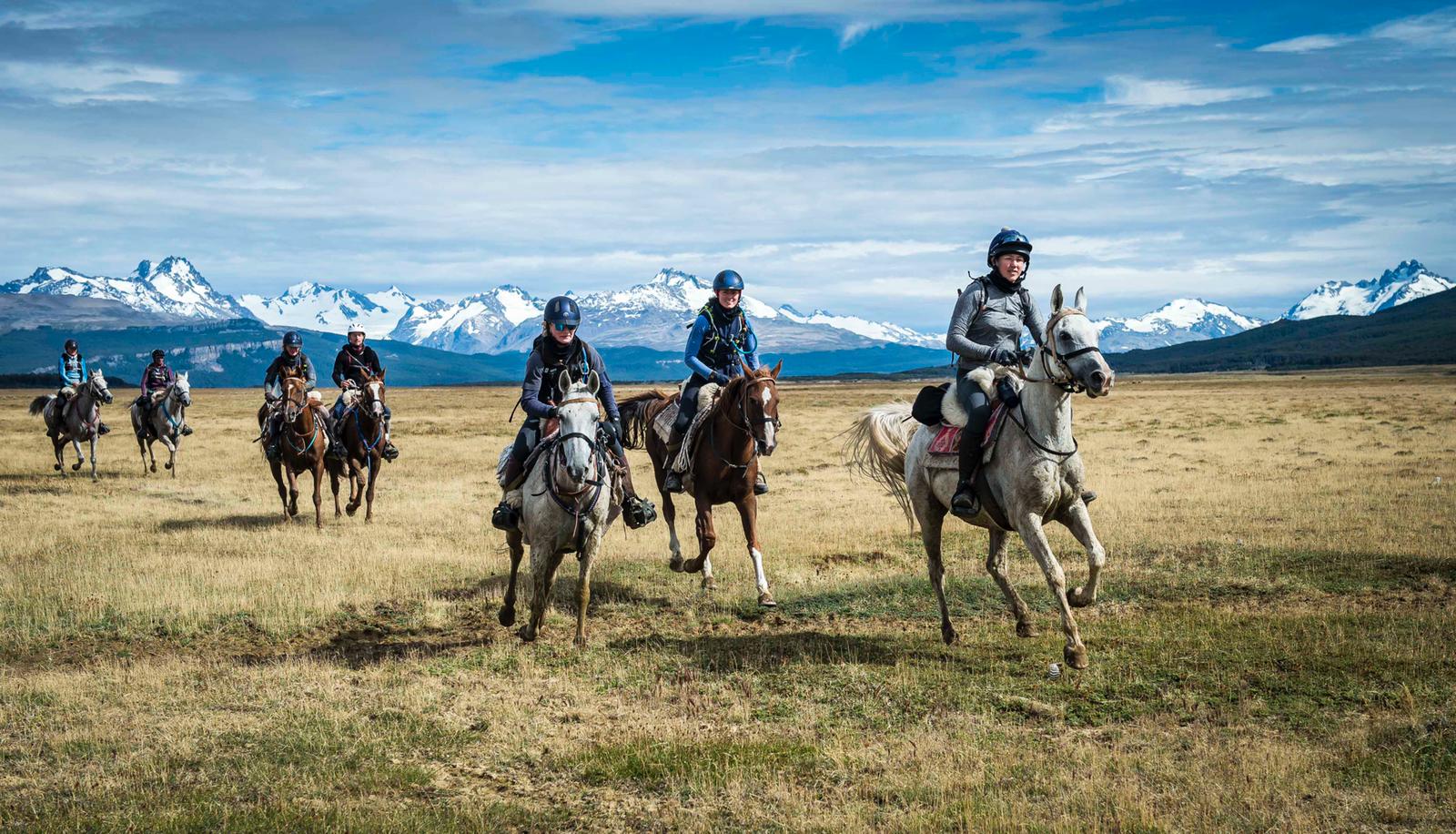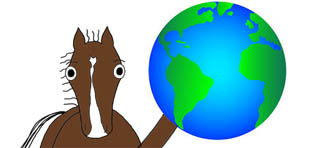 by David Ferguson
by David FergusonImagine yourself thundering deep into the wilds of Patagonia on horseback. You’ve got your steed underneath you and a pack horse by your side. You’re navigating across some of the wildest terrain on Earth attempting to win one of the toughest and most unusual equine challenges in history...this is the Gaucho Derby
After running the Mongol Derby for a decade, renowned as the ‘world’s toughest horse race’, The Adventurists decided it was time to grow the sport of ultra-endurance horse racing and went in search of the next world beating adventure. They didn’t just replicate The Mongol Derby with new scenery, but designed a new race from the ground up, based on the landscape, culture, history and horses of Patagonia and the Gauchos, and created, what they believe, is the ‘greatest test of horsemanship and wilderness skills on Earth’. And so, on the 5th of March, 24 riders from around the Globe lined up at the start of the Pioneer Edition of the Gaucho Derby and, over the next 10 days, the race certainly lived up to its billing
The nine stage race crossed 500km of Patagonian wilderness, including high mountains and pampas lowlands, making the event not just a test of riders’ skills on a horse, but pushing their navigation skills to the limit and testing their physical endurance and ability to handle the wilderness.
Whilst The Gaucho Derby is a multi-horse race, it differs from the Mongol Derby. The race is broken down into 40km legs, but riders don’t change horses at every section (as they do in the Mongol Derby). The high mountains are a test of skill, not flat out speed, so the horses don’t run out of steam and can cover several legs at a time. On the flatter pampas sections however, where horses can eat up the miles quickly, riders swap to fresh horses regularly.
Riders also do large sections with pack horses, to carry extra kit into the mountains. As well as looking after and guiding a second animal, they have to switch mounts mid leg to ensure the health of both animals by minimising the work.
The Adventurists monitor the horses’ welfare at every stage, with vet checks every 40km as well as race marshals and emergency and roaming vets to ensure that no rider puts their own competitiveness before the welfare of the animals - “We would rather nobody wins than someone wins by pushing too hard. Riders seen making bad decisions, riding too fast across difficult terrain or not presenting horses in great condition will get penalties or be disqualified. Full rules will be available to riders as we are developing them with our vet team now.”
The first Gaucho Derby began with a fast valley ride for some. Other riders took what they believed was a short cut through the mountains, only to have to turn back and lose any hopes of an early lead when they met unpassable terrain. Temperatures were hot, with riders wondering why they’d bothered packing so many cold weather clothes, luring many riders into a false sense of security as to what was to come.
Over the next few days, navigation remained a key part of the race. Riders traversed some breath taking, but ‘pretty gnarly’ countryside, with trails through passes, river valleys, dense forests, and bogs presenting challenges - all whilst individual riders tried to chivvy along a packhorse and keep their own horse on an even keel.
Then came the storm! Drama unveiled as the race headed through the mountains and a ferocious snow storm swept in. Local Gauchos helped guide riders to safe passage and an emergency shelter was created in a forest, with some riders (most to re-join the race later) air lifted out as a precaution.
With further bad weather forecast, the race was reset on day 6, with riders carrying forward their accumulated times from the previous stages, before the storm hit. Some faster riding, without pack horses, ensued and in the end, it was American Marie Griffis (a 2016 Mongol Derby veteran who runs an annual equestrian trip into the US mountains back home in Montana) who crossed the line first, having ‘weathered the storm well’ and ridden confidently ever since. In hot pursuit, crossing the line in the second place was Clare King from Wiltshire, an experienced rider who finished third in the Mongol Derby in 2013.
Of the race she commented...
“Every single decision affects your adventure and in turn your survival. There’s a battle between being competitive and ensuring your survival.”
But it was the Gaucho culture that left the biggest impression on her…
“The gaucho culture, (was the best bit) staying in a puesto the last night and getting to experience it hands on out of necessity.”
If you believe you have what it takes to ride in next year’s Gaucho Derby, visit https://www.theadventurists.com/adventures/gaucho-derby for more details.
Editor’s notes:
The Gaucho
“He has taken his first lessons in riding before he is well able to walk”
said David Christison in the 1882 Journal of the Anthropological Institute. Gaucho’s were nomadic, skilled horseman and cow herds who were reputed to be brave and somewhat unruly. Greatly admired and renowned in folklore and literature they became an important part of the regions cultural tradition. A way of life that has dwindled as farming practices and land ownership changed.
Clothed in a poncho (which doubles as a saddle blanket and as sleeping gear), a large knife called a facón and loose trousers called bombachas held in place with a wide belt, they travelled far across the wild landscapes of South America.
Some photos from the ride are here:
http://www.endurance.net/international/Argentina/2020GauchoDerby/pictures01.html



No comments:
Post a Comment